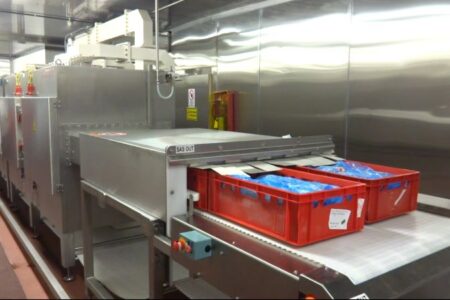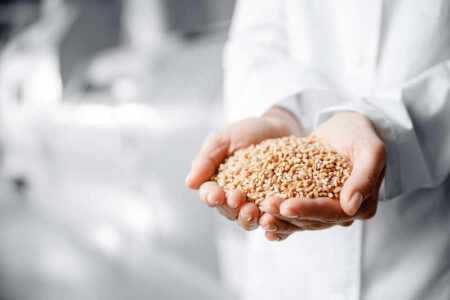A natural outcome

 The European commission published new guidelines on colouring foods, which became effective from 1 January 2014. The guidance notes aligned well with the attitudes towards greater clarity and transparency as well as new portfolio additions across Europe.
The European commission published new guidelines on colouring foods, which became effective from 1 January 2014. The guidance notes aligned well with the attitudes towards greater clarity and transparency as well as new portfolio additions across Europe.
From January 1st 2014, the legal position of colouring foods (CF) was clarified and manufacturers had to commit to the guidelines until the deadline at the end of November 2015.
To be classified as CF, one of the conditions is to retain the essential characteristic properties of the raw material (colour, aromatic and nutritive profiles). The other key point is to prove the non-selective extraction. In a pratical way, the ratio between the pigment and the nutritive constituents content in raw materials and in the final concentrate must be below 6 to be classified as CF.
As part of the Natural Colour Association (NATCOL) for more than 10 years, Diana contributed to help define the new guidelines by providing data on nutrients and pigments collected for many years on the colouring foods the company produces. All products within the Diana Clean’Impact and Juice’Impact ranges comply with these guidance notes and therefore are considered colouring foods (purple carrot, pumpkin, beetroot, elderberry, orange carrot…).
Olivier Cima, responsible for Diana’s colour strategy, explains, “These guidance notes clarifies the colouring foods definition and highlights the importance of agronomy. It reinforces the interest for end-product manufacturers to work with producers of primary fruit and vegetables juices.”
Correspond with consumer requests
Another company that is prepared for the additional transparency for manufacturers as well as consumers. Is German colour supplier Wild. The company believes that the EU regulations that had been in effect to date did not always precisely define colouring foodstuffs. The new Guidance Notes of the European commission will remove ambiguity with regard to classification in the future.
“The guidelines show substantial progress – not only for consumers who wish for transparency and natural foods, but also for manufacturers of foods and beverages,” says Silke Ortmann, product manager, Colours, at Wild. “Hence different legal concepts with regard to colouring foodstuffs can be avoided in the various member states in future.”
The Guidance Notes serve as an addition to already existing regulations in Europe and ensures legal certainty in the distinction between colouring foodstuffs and food colour additives. Therefore, a working group of the European
commission defined simple and practical, but partially new criteria. These include principles concerning raw materials, production processes, and product safety. Newly added criteria include the factor of enrichment and its precise calculation.
“Wild will be actively participating in establishing the Annex III of the Guidance Notes. As one of the leading manufacturers of natural ingredients,” concludes Silke Ortmann. The company’s Colouring Foodstuff from Nature range contains a broad selection of colouring foodstuffs that cover the spectrum from purple, red and orange through yellow, green and blue. They will be declared with their specific name, a declaration of the E number does not take place in contrast to food color additives. This way, the clean label products correspond with the wish of consumers for natural foods.
New clean label colour shades
Sensient Food Colors Europe has extended its Cardea range with a wider choice of bright new colour shades. The Cardea product line is completely composed of natural ingredients and concentrates meeting growing clean labelling demands and fits with the new EU guidance notes on colouring food.
The range includes raw materials processed with proprietary technologies offering bright shades and strong natural positioning. “Through screening a wide choice of ingredients, our scientists defined their characteristic functionality for food and beverage applications. This allows protection against both oxidation and fading in order to safeguard the intense natural colour shades available. These new shades are especially suitable for sweet and fruity applications such as yoghurt, dairy and fruit preparations as well as confectionery and other food and beverage use.”, says Dr. Roland Beck, Managing Director of Sensient Colors Europe.
The composition of Cardea enables food manufacturers to claim the total formulation of the colouring preparation as natural and complies with the new EU guidance notes.
Transparent carotenes labeling
Responding to the consumer’s need for more transparency in the labeling of their food and beverages, Kalsec offers carotenes from carrot extract as a natural colour source. “Based on many current ingredient labeling standards, consumers can’t distinguish if their food and beverages contain a natural or chemically derived beta-carotene colour source. Carrot extract allows food and beverage processors to provide a clearly identified, natural colour source,” says Carol Locey, natural colours product director.
Other natural carotenes can provide challenges due to their variability, stability, and storage and handling requirements. Fruit and vegetable juices, for example, can create inconsistent colour expression in food and beverages as seen on grocery store shelves. Kalsec is fully integrated from field to fork, controlling all aspects of seed development, growing and manufacturing. This removes crop variability ensuring consistent carrot extract quality.
The extracts are also available with Durabrite stabilisation technology for improved shelf-life stability in a wide range of applications. They can be used as a replacement for Yellow 5 & 6, mixed carotenoids and synthetic beta-carotene.



